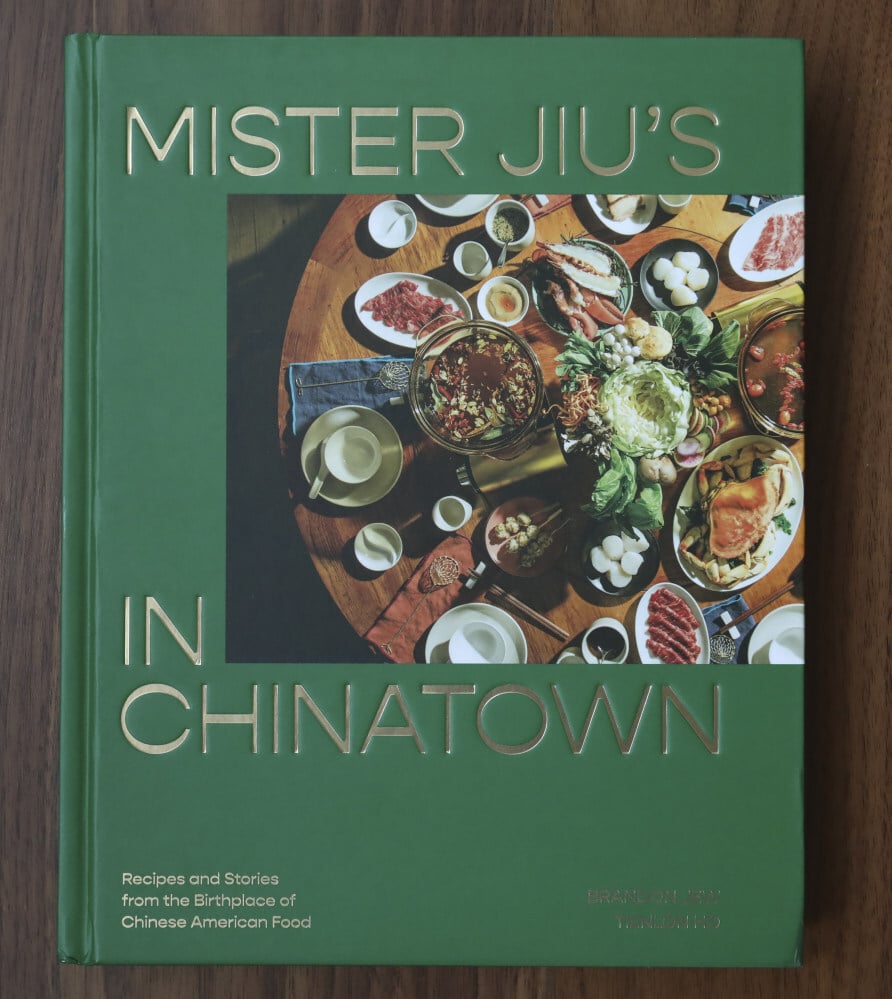
Mister Jiu’s in Chinatown, cookbook by Brandon Jew, chef-owner of the San Francisco restaurant, and the woman who inspired it
- When Brandon Jew’s grandmother, matriarch of his family and ‘head cook’, as he writes, died, he quit Western cooking to return to their shared culinary roots
- This book, co-written with Tienlon Ho, is subtitled ‘Recipes and Stories from the Birthplace of Chinese American Food’ and offers twists on classic dishes
For Chinese-American chef Brandon Jew, it was the death of his beloved grandmother, Ying Ying, that led him away from Western fine dining and back to his roots.
“I didn’t understand that I had to open Mister Jiu’s until Ying Ying – our name for our paternal grandmother in Toisanese – was diagnosed with cancer,” he writes in the introduction to Mister Jiu’s in Chinatown – Recipes and Stories from the Birthplace of Chinese American Food (2021), which he co-wrote with Tienlon Ho. “She was, at seventy-nine years old, the athletic, hilarious, strong-willed matriarch of our family. I was twenty-six and cooking on the line at Quince, a legendary restaurant in San Francisco, executing perfect Ricotta Sformato with artichokes, radicchio, and Umbrian lentil vinaigrette.
“I loved my job. I loved to work. I had not taken a vacation in what seemed like years. But my Ying Ying was dying, and with her a history in recipes and love. Ying Ying was our family’s head cook. She and I spoke the same language: heat, time, taste. But Ying Ying’s noh mai gai was a long way from Ricotta Sformato. Which meant every day at work in the kitchen, I was a long way from home.
“I had spent a solid chunk of my childhood in Ying Ying’s kitchen in Richmond [in San Francisco]. She would cook the northern Chinese food of her childhood and the southern Chinese food of my grandfather’s, and I would clean my plate; then she would refill my plate and praise me for being a good, big-boned boy. I did not tire of it. I had grown up speaking English but my culinary language was Chinese.
“We were a household that swung easily between meat loaf and haahm yu, fermented salted fish. And, always, there was Ying Ying in the kitchen in the middle of everything. Even when we could not come to her, she came to us, braving the trek to the suburbs.
While Yeh Yeh hunted for thrift-store treasure in downtown San Carlos, Ying Ying would wait outside our school to walk us home – where she would feed us the necessary after-school snacks. No detail was lost on her, if it was food-related. When I was cooking at Quince, Ying Ying would often show up at the one window to the kitchen, just to wave hello.

“Ying Ying cooked by memory, taste, and feel. Nothing was written down. She lived for only a few days after I learned she was sick. Her death marked a crossroads in my life and career. I’d climbed the rungs in the fine-dining world and was proud of my accomplishments; but suddenly mastery of the Art Culinaire mattered less to me than the masteries of Ying Ying and her kitchen.
The cookbook offers an interesting selection of dishes, including some items that are rarely seen in books targeted at the home cook, such as fermented mustard greens, home-made lap cheong and cured beef heart. Many of the recipes are variations on classics, including sea urchin cheung fan, pig trotter ham sui gok, pork rib and winter melon soup, and silken tofu with rib-eye cap mapo.

Other innovative dishes include Hangtown egg foo young, white-cut chicken galantine, oxtail soup, mustard green salad, gong bao romanesco, lion’s head meatballs with matsutake broth, yellow corn and squash blossom egg drop soup, banana and black sesame pie, and steamed kabocha cake with soy milk ice cream.

